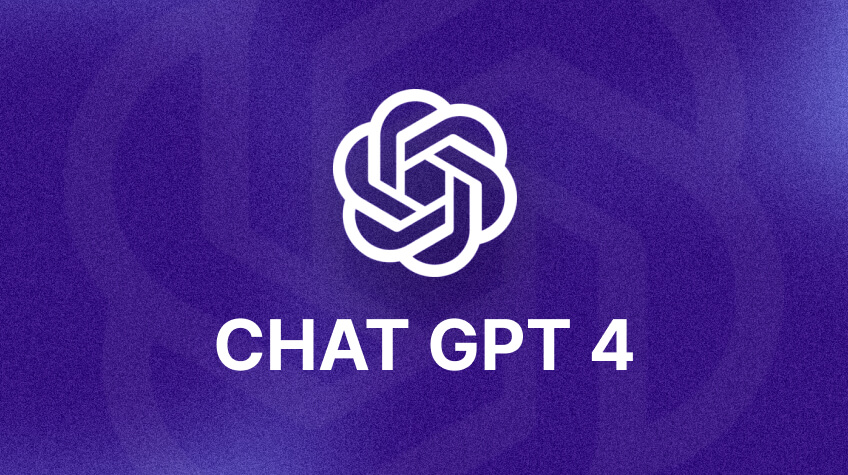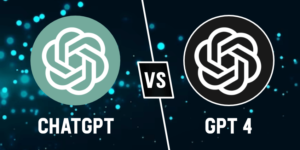
As an AI language model, GPT-4 promises to be an even more powerful tool for natural language processing and generation. Its advanced architecture and improved training methods are expected to enable it to generate more coherent and contextually-relevant text than its predecessors.
How to use GPT-4 effectively will still require careful consideration of input data, training parameters, and output quality. In this guide, we’ll explore the best practices for GPT-4 to generate high-quality text that meets your needs. Whether you’re a researcher, content creator, or simply curious about the latest advancements in AI language models, this guide will help you harness the power of GPT-4 to generate informative and engaging text.
What is GPT4
GPT-4 is the fourth generation of the GPT (Generative Pre-trained Transformer) series of AI language models developed by OpenAI. GPT-4 promises to be the most advanced language model yet, capable of generating coherent and contextually-relevant text with even greater accuracy and fluency than its predecessors.
It has a larger capacity, better training methods, and improved algorithms, allowing it to understand and generate more complex and nuanced language than ever before.
The GPT-4 architecture builds on the foundation laid by GPT-3 but with several key improvements. For example, it has a much more extensive training dataset, allowing it to learn from a broader range of sources and generate more diverse and accurate responses. It is also expected to have improved memory and attention mechanisms, enabling it to better remember and incorporate information from earlier parts of a text when generating later parts.
One of the most exciting features of GPT-4 is its potential to enable more advanced forms of human-machine interaction. With its ability to understand and generate complex language, GPT-4 could be used to power more sophisticated chatbots, language translation tools, and even creative writing assistants. Its applications could extend to various fields, from journalism and marketing to healthcare and education.
Of course, with tremendous strength comes greater accountability. As with any AI tool, GPT-4 must be used ethically and responsibly. It is essential to consider issues such as bias, privacy, and accountability when working with GPT-4 and to ensure that its outputs are transparent and verifiable.
Despite these challenges, the benefits of GPT-4 are vast. Its advanced language capabilities could revolutionize how we interact with computers and each other, enabling more efficient, effective, and meaningful communication across various contexts.
How to access GPT-4 on chatGPT
OpenAI has put its newest, sleekest GPT-4 model behind its $20 monthly subscription plan. While this is not good news for free ChatGPT users, it is another reason to upgrade to the paid tier. If you’re already on the paid plan, you can bump your account’s GPT model from GPT-3.5 default and legacy to GPT-4 on demand, allowing you to switch between both models. This should help you appreciate the power of the GPT-4 iteration.
For the free tier users, to get started with GPT-4, you’ll need a ChatGPT+ subscription. How do you upgrade to the ChatGPT+ plan?
How to update to ChatGPT+
ChatGPT+ is a premium version of ChatGPT that offers enhanced features and capabilities beyond the standard version. Upgrading to ChatGPT+ can provide users access to more advanced language models, improved response quality, and additional customization options.
To upgrade to ChatGPT+, follow these steps:
1. Go to the ChatGPT website and sign up for an account if needed.
2. Navigate to the upgrade page and select the ChatGPT+ plan that best suits your needs.
3. Follow the prompts to provide your billing information and complete the purchase process.
4. Once you have upgraded to ChatGPT+, you will have entry to a spectrum of advanced elements, such as:
- Advanced language models: ChatGPT+ offers access to more advanced language models than the standard version, allowing for more accurate and nuanced responses.
- Improved response quality: ChatGPT+ uses advanced algorithms to develop more suitable and legible replies to user questions.
- Customization options: ChatGPT+ allows users to customize their chatbot’s responses and behavior, making it more tailored to their needs and preferences.
- Priority support: ChatGPT+ users receive priority support from the ChatGPT team, ensuring that any issues or concerns are addressed quickly and efficiently.
- You should now have access to the OpenAI GPT-4 model alongside the older GPT-3.5 default and GPT-3.5 legacy models. Choose the GPT-4 model from the drop-down on your ChatGPT chat interface, and start using GPT-4 with ChatGPT.
Upgrading to ChatGPT+ can provide users with a range of benefits that can enhance their experience and productivity when using the chatbot. Whether you are a content creator, researcher, or simply looking for a more advanced language model, ChatGPT+ is a powerful tool to help you achieve your goals, and you also have an excess of GPT-4
How to use GPT 4 for free
Currently, GPT-4 is not freely available, and there is no way to use it for free.
However, many other AI language models can be used for free. One of the few famous language simulations is GPT-3, available through OpenAI’s API. To use GPT-3, register for an API key on the OpenAI website and obey the instructions to integrate the API into your project.
Once you can access the API, you can input your prompts and receive generated responses.
Another option is to use open-source language models such as Hugging Face’s Transformers library, which includes a range of models such as GPT-2 and BERT that can be used for free. To use these models, install the Transformers library and follow the documentation to load the desired model and generate text based on your prompts.
It is important to note that while these language models are free, they may have usage limits or other restrictions. Additionally, it is essential to use them ethically and responsibly and to ensure that any generated content is appropriately cited and verified for accuracy.
GPT-4: Is it worth the hype
It is difficult to assess its worth and live up to the hype. However, based on the performance of its predecessor GPT-3, there are high expectations for GPT-4.
GPT-3 has been widely praised for its advanced language capabilities, including the ability to generate contextually relevant and fluent text in response to prompts. It has also been used in many applications, such as chatbots, the creation of content, and vocabulary translation.
Given the ongoing improvements in AI and natural language processing, it is reasonable to expect that GPT-4 will be even more advanced than GPT-3, with even greater capabilities and applications. However, it remains to be seen how significant the improvements will be and how they will impact the field of AI and natural language processing.
It is important to note that while GPT-4 has the potential to be a powerful tool, it is only a panacea for some language-related tasks. Like all language models, it has limitations and may produce errors or generate inappropriate responses. Additionally, it is essential to use GPT-4 ethically and responsibly and to ensure that any generated content is appropriately cited and verified for accuracy.
While it is too early to say whether GPT-4 is worth the hype, it is reasonable to expect it to be a significant advancement in AI and natural language processing. However, as with any tool, it is essential to use GPT-4 responsibly and to consider its limits and possible preferences.
Related Post: How to Fix ChatGPT is at Capacity Right Now Error
In conclusion, It is important to note that GPT-4, like all language models, will have limitations and may produce errors or generate inappropriate responses. Therefore, it is essential to understand how to use GPT-4 ethically and responsibly and to ensure that any generated content is appropriately cited and verified for accuracy.
Overall, GPT-4 can transform the field of AI and natural language processing. As technology advances, it is essential to stay up-to-date on the latest developments and use these tools ethically and responsibly to ensure a positive impact on society.






